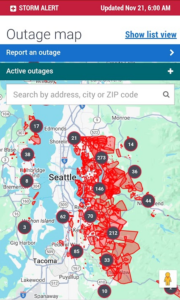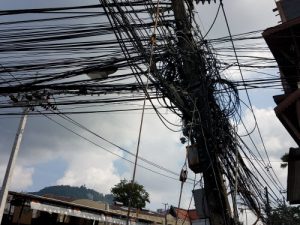
A few months ago, a windstorm knocked out power across the Seattle area. For days, about 250,000 customers didn’t have power, a situation that presented valuable lessons in communication and expectation-setting.
At first, Puget Sound Energy (PSE) gave every customer an estimated restoration time of “Saturday at noon.” However, this blanket statement wasn’t reasonable. Restoring power to these many individuals was a huge feat. We believe PSE meant well by communicating estimated restoration timelines to customers, but when the estimates couldn’t be believed, they eroded trust. Some customers had their power restored well before the estimate time, but thousands had to wait much longer.
At J Street Technology, we try to develop realistic timelines for customer projects and keep them updated as they change.
Here are our business takeaways from the PSE power outage that we’re keeping in mind, and we suggest you do too.
1. Overpromising is Costly
PSE’s timelines were likely well-intentioned but caused disappointment when unmet. In client projects, overpromising can similarly backfire. While ambitious timelines may secure initial buy-in, missing deadlines raises doubts about your team’s reliability.
It’s better to under promise and overdeliver – not the other way around. And if you really don’t know yet – just say so! PSE could have said “We’re working on it” or “Unknown” until they had a credible estimate – that would have been more honest.
2. The Power of Buffering
To avoid overpromising, build buffers into your timelines. If you think a feature will take two weeks to develop, communicate a three-week estimate. This provides flexibility for unforeseen challenges. Plus, if you can complete these same tasks early, you are now exceeding expectations. Using a restaurant waiting list as an example: They usually seat you faster than they estimated.
3. Updates Are Key
When circumstances change, proactive updates are essential. PSE could have prevented frustration by notifying customers of delays and revised timelines as they learned more.
Also, sharing the number of successful restorations in the last X hours would have given PSE customers a sense of progress – even for those that didn’t have power yet. Again, using the restaurant waiting list example – you want to see the parties ahead of you being seated, so you know that it will be your turn eventually.
For our client projects, this means:
- Early Alerts: Notify clients of potential delays as soon as possible.
- Provide Context: Explain why the delay is occurring and steps to address it.
- Offer Solutions: Suggest adjustments to keep the project on track.
- Demonstrations: Show progress by displaying working code as it becomes available.
The Long-Term Benefits of Transparency
Transparent communication builds a reputation for reliability. Informed and respected clients are more likely to stay loyal, recommend your services, and partner with you again. These are qualities you want to look for if you’re wondering how to choose the right development team.
Ultimately, PSE’s response highlights the importance of clear, proactive communication and realistic timelines. By thoughtfully setting expectations, building in buffers, and providing timely updates, you can navigate challenges while maintaining trust—even in the face of the unexpected.

